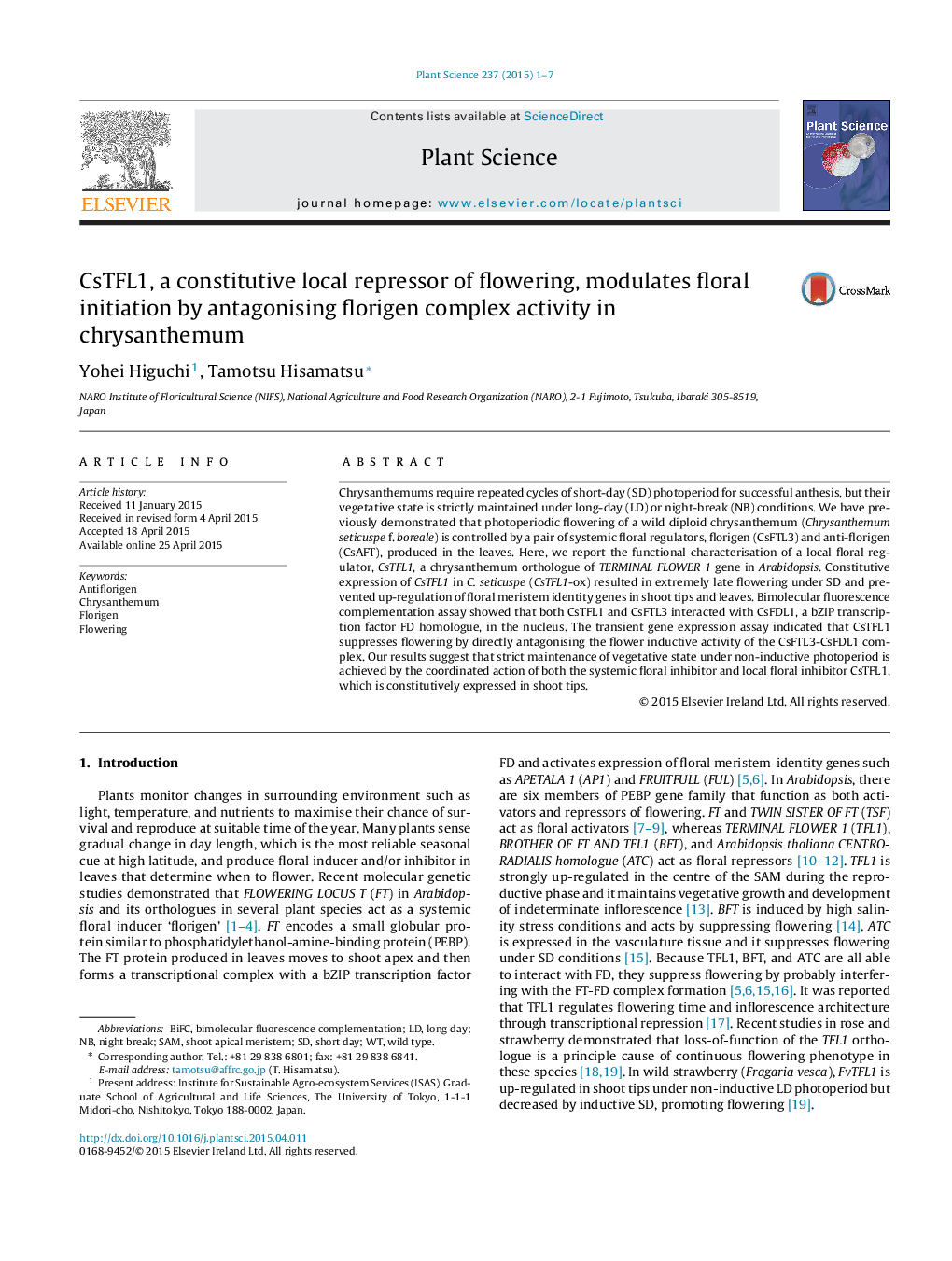| Article ID | Journal | Published Year | Pages | File Type |
|---|---|---|---|---|
| 2016967 | Plant Science | 2015 | 7 Pages |
Abstract
Chrysanthemums require repeated cycles of short-day (SD) photoperiod for successful anthesis, but their vegetative state is strictly maintained under long-day (LD) or night-break (NB) conditions. We have previously demonstrated that photoperiodic flowering of a wild diploid chrysanthemum (Chrysanthemum seticuspe f. boreale) is controlled by a pair of systemic floral regulators, florigen (CsFTL3) and anti-florigen (CsAFT), produced in the leaves. Here, we report the functional characterisation of a local floral regulator, CsTFL1, a chrysanthemum orthologue of TERMINAL FLOWER 1 gene in Arabidopsis. Constitutive expression of CsTFL1 in C. seticuspe (CsTFL1-ox) resulted in extremely late flowering under SD and prevented up-regulation of floral meristem identity genes in shoot tips and leaves. Bimolecular fluorescence complementation assay showed that both CsTFL1 and CsFTL3 interacted with CsFDL1, a bZIP transcription factor FD homologue, in the nucleus. The transient gene expression assay indicated that CsTFL1 suppresses flowering by directly antagonising the flower inductive activity of the CsFTL3-CsFDL1 complex. Our results suggest that strict maintenance of vegetative state under non-inductive photoperiod is achieved by the coordinated action of both the systemic floral inhibitor and local floral inhibitor CsTFL1, which is constitutively expressed in shoot tips.
Keywords
Related Topics
Life Sciences
Agricultural and Biological Sciences
Plant Science
Authors
Yohei Higuchi, Tamotsu Hisamatsu,
